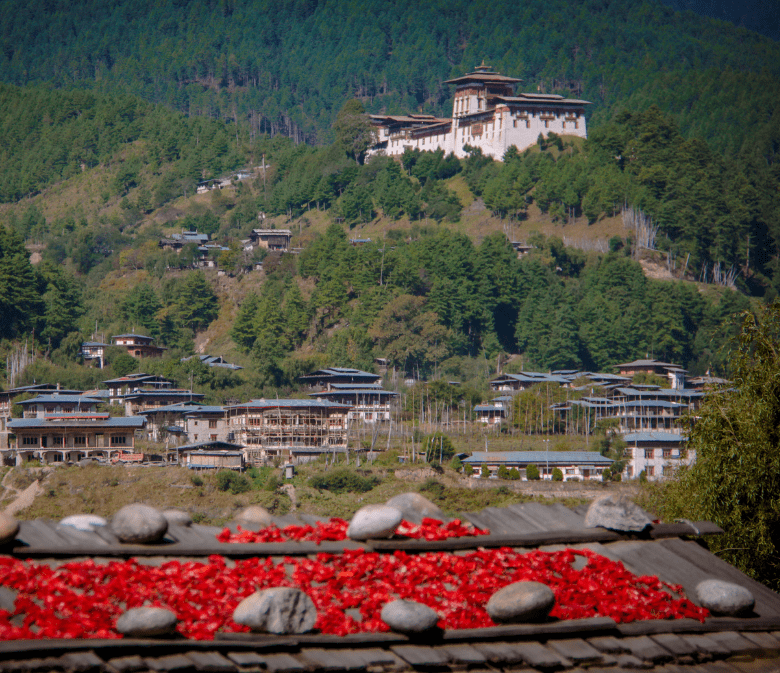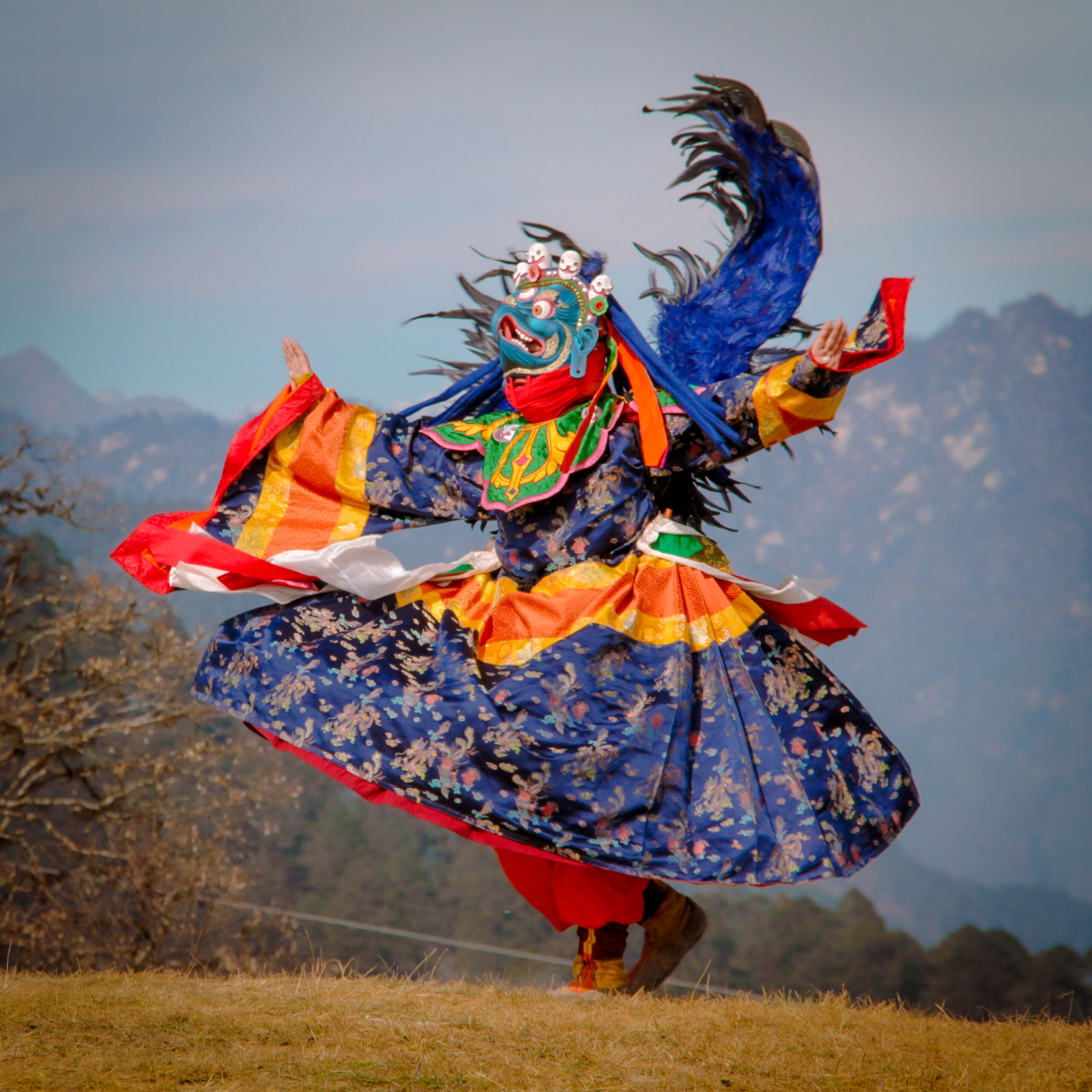- Overview
- Trip Outline
- Trip Includes
- Trip Excludes
- Gallery
- Booking
- FAQ
Bumthang is the most historical valley with visible signs of the visit of the great Buddhist saint from India in the 8thcentury. The tales of Guru Padmasambhava and his reincarnates known as Lingpas, lingers in every nook and corner of the four beautiful valleys of Bumthang.
Bumthang, a general name of the region, comprises the four beautiful valleys of Chhume, Chhoekhor, Tang, and Ura.
Itineraries
Day 1
Fly in Paro, Bhutan - Thimphu
Welcome to Bhutan. On a clear day, one will experience breathtaking views of major Himalayan peaks, Jomolhari and Jichu Darkey in Bhutan from your flight. Upon arrival Bhutan's first gift to you will be clean fresh mountain air. Obtain your Bhutan visa which will be pre-paid, and after clearing Immigration and Customs, you will be met outside at the exit point by Bhutan Sky Trails representatives and escort you around for the sightseeing, onward to your hotel.
Visit Ta Dzong (National Museum), which towers above the Paro Dzong and viewing its well-interpreted collection of historic artifacts that makes a great prologue to the journey yet to come.
Visit Paro Dzong. This massive fortress is located in the Paro valley, approached by a gently sloping flagstone road, a beautiful wooden bridge roofed with shingles and abutted by two guardhouses. Today, the Dzong is the Administrative seat of Paro district and it also contains a state monastic community of about 200 monks. The central tower ("Utse") of the Dzong is one of the most beautiful in Bhutan with its superb woodwork. The Dzong was built in 1646 A.D. After wards drive to Thimphu for the overnight which is around an hour drive from Paro.
Day 2
Thimphu – Thimphu
Begin the day with the visit to Memorial Chorten built in 1974, in memory of the third King of Bhutan who reigned the country from 1952-1972. Next visit the Buddha Dordema located at Kuenselphodrang, it is 51.5 meter bronze statue overlooking the Thimphu valley. After that stop by Changangkha temple built in 12 century; the Painting School (Zorig Chusum if in session) where traditional art and craft is still kept alive, Takin preserve to see Bhutan’s national animal, Zilukha nunnery to grasp the role of woman in Bhutan’s spiritual realm, the Handicrafts Emporium where Bhutanese textiles and other arts and crafts are displayed which can be purchased, and TashichhoDzong, the main secretariat building. This massive fortress houses part of the government Ministries, the office of the King and the Throne Room. It also houses the State Monastic Body, the office and the living quarters of the Chief Abbot.
Day 3
Thimphu – Phobjikha
Embark approximately 5 – 6 hours drive over Dochula Pass (3,150 m) to a beautiful glacier valley of Phobjikha. Stop at the Dochula pass for hot cup of tea/coffee, chance to stretch your legs and use proper toilet facilities. On a clear day one can view the Himalayan ranges with 108 stupas named as “Druk Wangyel Chorten” that have been erected here by the Queen Mother.
From Dochula pass take a gentle and beautiful hike through the forest of hemlock and rhododendrons to Lungchutse Temple, located at the elevation of 3,569 meters. This hike has lots to offer you and most importantly 360 degree view of Himalayan ranges on a clear day. Photos do not justify the beauty of the place as seen through the lens of the living eyes.Then continue your drive to Phobjikha valley for overnight stopping along the way.
Phobjikha is popular for the endangered Black-necked Cranes (Grus nigricollis) that migrate to Bhutan. These large birds migrate from northern Tibet to Phobjikha valley to escape its harsh winter. Relax and enjoy the beauty of Phobjikha valley.
Day 4
Phobjikha - Bumthang
Take a nature trail walks for about 2 hours that will give you great opportunity of a scenic view of the valley and visit Gangtey Monastery beautifully located on a hill top and founded in 1613. Begin your drive towards Bumthang, the drive is very scenic across Pelela pass (3,300 m) to Trongsa descending through farm houses and Chendbji chorten, built in Nepalese style with gigantic Buddha’s eye painted at the four cardinal points. Continue your drive across Yotongla pass (3,325 m) passing by beautiful Chumey valley. Bumthang region encompasses four major valleys: Chumey, Chokhor, Tang and Ura.
Day 5
Ura Valley Excursion
Today take a day excursion to Ura valley, and on the way stop by Mebartsho “The Burning Lake”, where Pema Lingpa, a saint from Bumthang found the treasures hidden by Guru and thus became a “terton’’ discoverer of religious treasures. Before reaching Sherthang la pass is the magnificent view in clear eather of the kingdom’s highest peak, Gangkar Puensum, its massive summit etched against the sky. From Sherthang la pass take a downhill hike to Ura village.
Day 6
Bumthang– Bumthang
Visit Jambay lhakhang built in 7th century by the Tibetan Buddhist king Songtsen Gampo. Kurjey Lhakhang, the monastery where Guru meditated, is one such place, and according to local lore, one can see the imprint of Guru Rinpoche’s body on the rock where he once sat. Then walk for approximately 30 minutes across Chamkhar chhu to Tamshing lhakhang built in 1501 and founded by the great “revealer of treasures”, Pema Lingpa. It contains exquisite paintings and statuary, said to date back to back to the time of the great revealer himself. Explore nearby places and afternoon is free time to explore down town chamkhar.
Day 7
Bumthang – Punakha
When you drive back to Punakha you will visit Royal Heritage Museum, Ta Dzong ‘watchtower’ built to guard the Trongsa Dzong from the inter-region and outside invaders. It was renovated and converted in museum in 2008, it show case some of the rare and priceless artifacts of the kingdom and history of monarchy. Visit Trongsa Dzong built in 1652, by Chogyal Minjur Tenpa, the third Desi (temporal ruler) sent by Zhabdrung to unify the eastern Bhutan. He rebuilt the dzong in its present form. Afterwards continue your drive to Punakha valley.
Day 8
Punakha - Punakha
This morning drive to the north of the valley around 30mins and take a hike, which is around 1-2 hour to Khamsum Yule Namgyel chorten, which took more than 9 years to complete it. The walk through rice fields, passing by farm houses is very scenic and beautiful.
Visit the Punakha Dzong, which house the district administration offices. It is also the winter residence of the central monastic body and the Je Khenpo head monk of Bhutan. The dzong was damaged by fire in 1986, and recently renovated using traditional building techniques. It is one of the most beautiful Dzong in the country, located at the confluence of Pho chu (male river) and Mo chu (female river).
Day 9
Punakha - Paro
Take a short walk through the rice pounding village visit Chimi Lhakhang, a fertility shrine, built in the 15th century by Lama Drukpa Kuenley, also known as the “the Divine Madman”. The cheerful flying phallus that one sees painted on homes throughout Bhutan is a tribute to this saint, whose presence distracts and thus repels evil spirits.
Drive approximately 4 hours’ drive to Paro stopping in Thimphu for any last minute shopping. Visit Bhutan Post to make your personalize stamp if you wish or visit the local market, this is a wonderful opportunity to witness daily life of people. If locals are practicing or playing archery (the national sport) you can stop and witness the sport. Visit traditional paper making unit and on the way to Paro stop by Tachogang to see the 15th century Iron chain bridge.
Day 10
Paro - Paro
Hike to Taktsang (Tiger’s Nest) Monastery. The Icon monastery of Bhutan, this monastery clings to a cliff which was built in 17th century. The monastery was burnt in 1998 and was rebuilt. The mountainside viewpoint for this dramatically situated and most sacred site is accessible by walk of about 5 hours round trip. There is also a cafeteria at mid-point, where one can enjoy refreshments and meals.
In Paro make a visit to Kyichu Lhakhang, one of the most sacred temples in Bhutan, built in 659 AD by Tibetan Buddhist king Songtsen Gampo.
Day 11
Depart.
After breakfast, say good bye to this lovely country and you will then be transferred to the airport for you flight.
No Details Found



